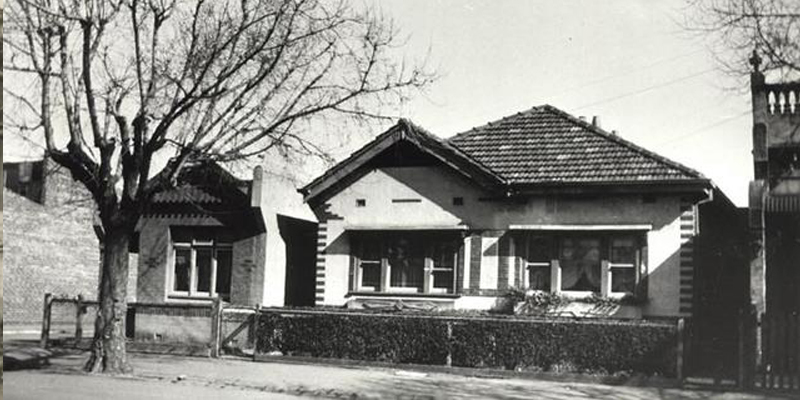Stuck in your house? Why not find out about its history?
Researching the history of your house need not be a daunting experience. Investment in this type of research can be fascinating, engrossing and sometimes frustrating. It may be time-consuming, but you will find the process is a rewarding one.
While not every resource is available online, you can certainly have fun with some of these.
Quick Links
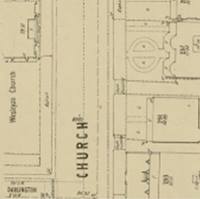 |
Find your house on a nineteenth-century mapThe Melbourne Metropolitan Board of Works was really, really interested in drains. So they created a series of maps showing Melbourne’s drains in great detail. Why is this useful for finding out about the history of your house? Because the maps also show detailed ‘footprints’ of buildings. |
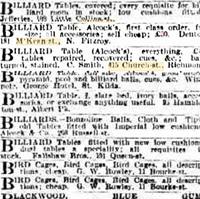 |
Look for your address in old newspapersThis billiard table repairer worked from the Richmond Library site! The National Library’s Trove database has thousands of digitised Australian newspapers. |
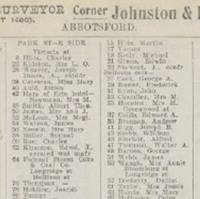 |
Look up an old postal directory and see who used to live in your houseLook up your address via digitised copies of the Sands & McDougall postal directories online at The State Library of Victoria. |
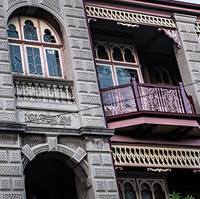 |
Has your house been part of a Council heritage study?Have a look at the heritage studies and reviews relating to the City of Yarra as well as The Yarra Heritage Database.
View City of Yarra's Heritage Studies |
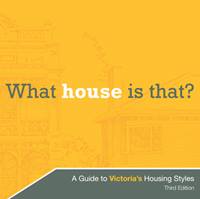 |
Check visual clues to estimate the age of your houseWhat House is That? is a booklet from the Heritage Council of Victoria to help you identify architectural styles. |
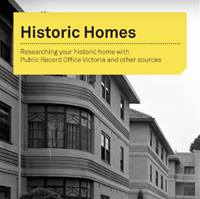 |
Got a taste for house and building research? Want to learn more?This terrific guidebook is from the Public Record Office of Victoria. |
Starters tips
Start out by doing a little background reading, then use primary sources such as Council rate books and post office directories to discover the story of your house. Remember that making systematic notes as you go will save time in the long run.
Books to get you started
Be aware that some of the books listed are available for reference only within libraries. Books available for loan can be sent to any of our libraries for collection.
- Regan, D and Press, K (1990) How to trace the history of your house Penguin, Ringwood
- Davison, G and McConville, C (ed)(1991) A heritage handbook, Allen & Unwin, North Sydney
- Kellaway, C (1991) How to research the history of a house, Allen & Unwin, North Sydney - Chapter 14 uses Richmond buildings as case studies
- Jackson, R (2001) Researching your house in Richmond, Burnley, Vic.
Books to help you estimate the age of your house
- Vines, M, Outhred, G and Leigh, J (1996) Identification of housing styles and faults, RMIT, Melbourne.
- Burchell, L (1991) Recognising house styles 1880s - 1990s, City of Coburg, Coburg.
- Stapleton, M and Stapleton, I (1996) Australian house styles, Flannel Flower Press, Yeronga.
Council conservation studies and Heritage reviews
Conservation studies were published by all the councils now covered by Melbourne and Yarra during the late 1970's - 1980's. Conservation studies are essentially surveys of historic sites, with brief histories of significant buildings, often including houses. You may be very lucky, and find a listing for your house. Check the library catalogue for the conservation study for your area, or ask library staff.
More recently, the City of Yarra published the five-volume City of Yarra Heritage Review (Allom Lovell & associates, 1998). This draws on work done by the conservation studies, but also includes buildings not previously identified.
A heritage gaps review was conducted in 2012 and can be viewed at Fitzroy Library. The 2012 review made changes to the recommendations of the 2009 study. The recommendations were to introduce three new heritage precincts - Alphington East, Cole's Paddock Estate Richmond and Wellington Street Cremorne. Eight existing heritage precincts in Richmond, Cremorne and Alphington were reviewed.
Primary source material
The two major resources we have in our libraries are post office directories, and Council rate books. These are available at Fitzroy, and Richmond Libraries (note that City of Collingwood rate books are held at the Fitzroy library). City of Melbourne rate books spanning 1861-1975 are available at Carlton Library. These resources have been copied to microfiche and microfilm, and can be read on machines in the libraries.
Post office directories
Post office directories were the equivalent of present-day phone books. These directories are useful for finding who out lived at your address, and they also assist in building up a picture of your street. The major publisher of post office directories was Sands and MacDougall, so you'll often hear them referred to as 'Sands and MacDougall directories'. Richmond and Fitzroy libraries hold microfiche copies of the Victorian directories, with a date range from 1839 to 1940.
The first rule for working with this kind of source material is to go backwards from what you know. For example, if you know for certain a house existed in 1940, go backwards from there. Aim to find out when a house first appears on a particular site. To ascertain the location, you may need to piece together information (such as the neighbours or landmarks) as street numbers are not always given, and the numbering may have changed. Street names themselves change too, which can cause confusion. However the directories will often mention the change.
The following books may assist in this process:
- Jackson, R (1997) The streets of Richmond, Richmond & Burnley Historical Society, Richmond.
- Cummings, K (1997) Streets of Collingwood, Collingwood Historical Society, Abbotsford.
Council rate books
Council rate books were used to record Council rates collection. They include information about the owner and the occupier of a property, a brief description of the dwelling (i.e. 'a wood house 3 rms') and the valuation. The rate books are set out by ward, then by street. Maps are available for checking the ward, as boundaries and names have changed over the years. There is a street index at the beginning of each ward listing, which will tell you which page to look for. If for any reason you don't already know the address of the property, you'll need to check this in the postal directories first.
As mentioned before, it is a good idea to start with what you definitely know, and work backwards. For example if you think your four-roomed brick house was built c. 1915 - 1920, start in say 1930, then work backwards to find the first reference that matches your house. You may find that the record for 1916 reads 'house brick 4 rms', the record for 1915 reads "house wood 3 rms" (and if you go back even further, the record for 1870 reads 'vacant land'). You can then be fairly certain that your house was built c. 1915-16. It can be a good idea to note the valuations for each year you check, as variations could indicate alterations to the building.
If there are no street numbers at all, you'll need to do some educated guess work. Your house may be the fourth property after an intersection for example, which is something you can follow back, especially if you build up a picture of who lived in the house in question, and the neighbouring houses and landmarks. Do remember that the sizes of blocks of land may change over the years. Inner-city areas were often sub-divided, and what one year may have been a single rateable property, may become three properties in a subsequent year.
The Fitzroy rate books 1858-1949 were digitised in early 2011 and an electronic copy of these are available for viewing at the Fitzroy Library in the Local History Collection. The scanning of these records was made available through a grant by the Public Records Office of Victoria.
City of Melbourne rate books 1861-1975 are also available for viewing at Fitzroy Library.

